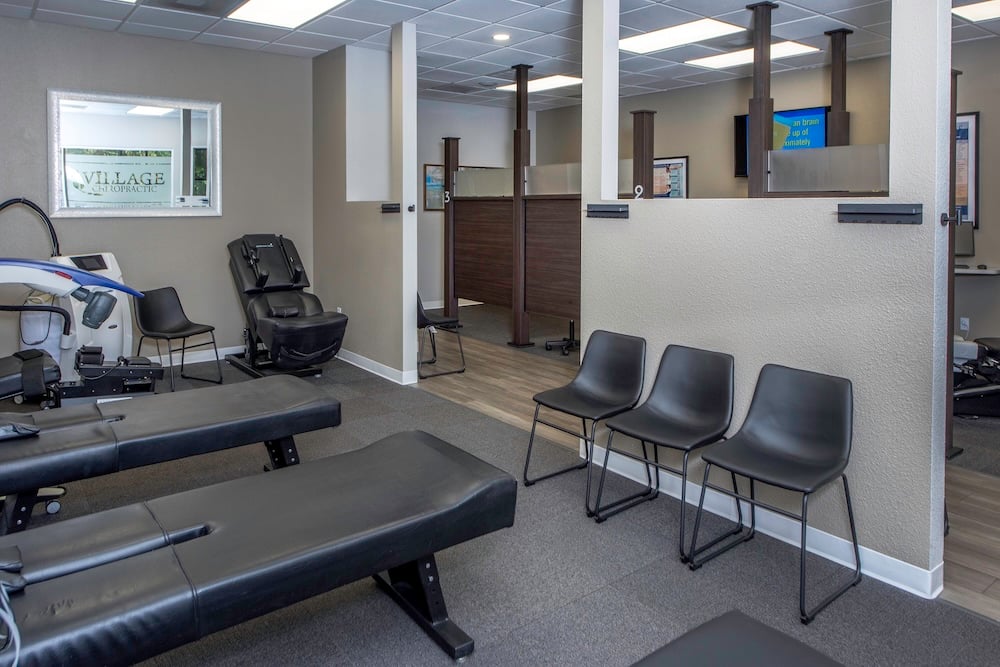What to Expect When You Visit a Chiropractor For The First Time
4 min read

If you've never been to a chiropractor you might have questions about what to expect during your first visit. Is it like any other doctor visit?
While every chiropractor office does things in their own style, the average first chiropractic consultation usually lasts around 30-45 minutes. Most of that time is spent getting to know more about you, how you're feeling, and what you'd like to achieve.
What's the Goal of Your First Chiropractor Appointment?
The end results of your first chiropractor appointment should be diagnosis of the problem and a treatment plan. There may be a few other things needed, like an MRI, to fully create the plan but your chiropractor is going to ask questions and listen carefully to what you're saying so they can start to form a plan.
In some cases it's not a mystery, especially if you had an accident or an injury that is now causing pain. In other cases patients may not be sure exactly what is causing their pain but they'd like to get back to feeling normal. For these patients the chiropractor will spend time asking questions that will help find the source of the problem that may need to be addressed.
What's Typically Included in a Consultation With a Chiropractor?
Your consultation with your chiropractor will consist of three primary steps:
- An overview of your medical history and symptoms
- A physical examination
- Creation of a personalized treatment plan
Your first appointment might also include some chiropractic treatments, but it will depend on your condition and what needs to be done to help you feel better. After that, you'll more than likely have several shorter appointments for treatments spanning over a few weeks or months, depending on what you need help with.
Medical history and symptoms
Sometimes, a person's medical history influences their current or future health (or which treatments might be best for them). Your first visit with a chiropractor will involve a review of your medical history.
Your chiropractor will likely ask about:
- Previous treatments for an injury you'd like to have treated. If you have any images such as X-rays or an MRI for this particular injury try to bring those images with you.
- History of other injuries
- Any diagnosed medical conditions and treatments you've received for them
- Any medications that you take (prescribed or over-the-counter)
- Vitamins and supplements you currently take
- Your drug, alcohol, and tobacco usage
- Your lifestyle (diet, exercise, etc.)
Quick tip: Check to see whether your chiropractic office offers incoming patients patient forms online to help fill in some of this information before your appointment
If you can, try to write down the symptoms that you notice for a few days or a week before your appointment. It can help jog your memory once you're in the office. Be ready to answer questions about:
- How the pain seemed to start
- When the pain started
- The type of pain you're experiencing (occasional or constant? Sharp or dull?)
- What sorts of circumstances or activities help you feel better or make you feel worse
Physical exams
Your physical examination will probably be pretty similar to the physical examinations you may have experienced in the past. Your chiropractor will do things like:
- Test your reflexes
- Assess your range of motion
- Watch how you walk
- Feel your spine and joints
- Test your muscle strength
If you have questions about what you'll experience during your physical exam, don't be afraid to ask your chiropractor beforehand! They'll be happy to let you know what they're about to do to be able to help you best.
Diagnostic studies (ie x-rays) when needed
In some cases, x-rays or other medical images are needed before treatment can begin. You can often get your treatment started sooner if you have recent images and bring them with you to your chiropractor appointment.
X-rays are usually only used to help a chiropractor view patients' bones. If your chiropractor suspects that you have soft tissue damage, he or she might refer you to an outside imaging center for scans like an MRI.
Creating a Chiropractic Treatment Plan for You
Your chiropractor will help you create a treatment plan. Chiropractic care centers around treatment plans that integrate:
- Short-term goals like reducing pain or restoring normal joint function
- Long-term goals like improving your ability to live independently and avoid pain in the future from conditions that may develop if you're left untreated
How Many Chiropractic Treatments Will You Need?
Nobody can predict the exact treatment plan length that's best for you. A lot of chiropractors begin with some standard plans and work to personalize them from there.
The number of times you'll need to come in for treatment depends on your diagnosis, response to treatments and your ability to stretch or perform other exercises at home between sessions.
Treatment Options at Village Chiropractic
At Village Chiropractic, we're offer our patients a range of services; but remember-- most patients don't need all of these!
Get in touch with us to set up an appointment if you're having pain, recently had a car accident or personal injury, or you're experiencing regular headaches.
Our chiropractors will create a treatment plan to help you start feeling better soon!







